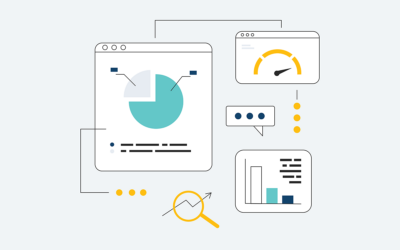The use of hiring assessments to identify sales candidates with long-term success potential is fast becoming the norm.
As sales leaders and HR professionals find themselves under increasing pressure to identify, hire, and onboard salespeople who can perform more quickly and who will stick around longer, they’re demanding more out of an assessment tool. They want to know how they can use a sales assessment as more just than a yes/no milestone in the hiring process.
If you’re in this camp, below are 3 tips for using sales assessments to identify and develop long-term potential.
Use the Sales Assessment as a Component of Your Career Mapping Strategy
The most successful organizations have a talent management strategy focused not only on today, but 3 – 5 years out as well. They know what competencies they need for their current openings, and they also know the attributes, behaviors and motivators their senior roles require.
By using this data, they’re able to develop long-term career paths for their new hires. They’re able to see—and articulate to the hire—what their future looks like, as well as the success milestones that must be hit to ensure upward mobility. Strong talent wants to know how they can grow in your organization, so when you can provide an assessment tool and apply it in a way that helps you retain the people with the greatest potential, it becomes a win-win.
Use the Sales Assessment to Identify Where Your Greatest Return-On-Coaching Is
Good coaching helps keep good people, and the use of a sales assessment to identify where a good sales manager/coach should spend most of his or her time is an often-overlooked application of the tool. By looking at factors such as coachability, drive, energy, and job focus, you can rank where you have the potential to get the greatest return on coaching.
I’ve seen many, many successful people who would have been overlooked if it hadn’t been for their sales assessment results. They lacked industry experience and job skills; however, the assessment success indicators were there and the organizations took a risk. They hired them and invested in them from a coaching and development perspective. It paid off.
Slow Down and Focus on Fit
Any solid assessment tool should offer the ability to develop a sales position benchmark so that you have an objective measure of what soft skills and personality characteristics your sales job requires for superior performance.
So, let the assessment do what the assessment does. The right assessment will tell you the long-term success potential of a candidate. It seems so fundamental, but oddly enough too many companies go to the trouble of sourcing and selecting a hiring tool only to disregard the insight it gives. In the rush to fill a position, it can be very easy to overlook gaps between a job benchmark and what a candidate’s assessment tells you, but patience – and trusting the tool – are key.
NOTE: Our sales training tools are designed to make your life easier. Use them to your advantage.
Essential Elements of a World-Class Sales Coaching Program
“Recent study shows that while close to 90% of organizations provide some sort of coaching to their salespeople, 65% of those programs are considered ineffective.” The Brooks Group recently teamed up with Training Industry, Inc., a research organization focused on getting to the bottom of current best-practices in sales team effectiveness.




